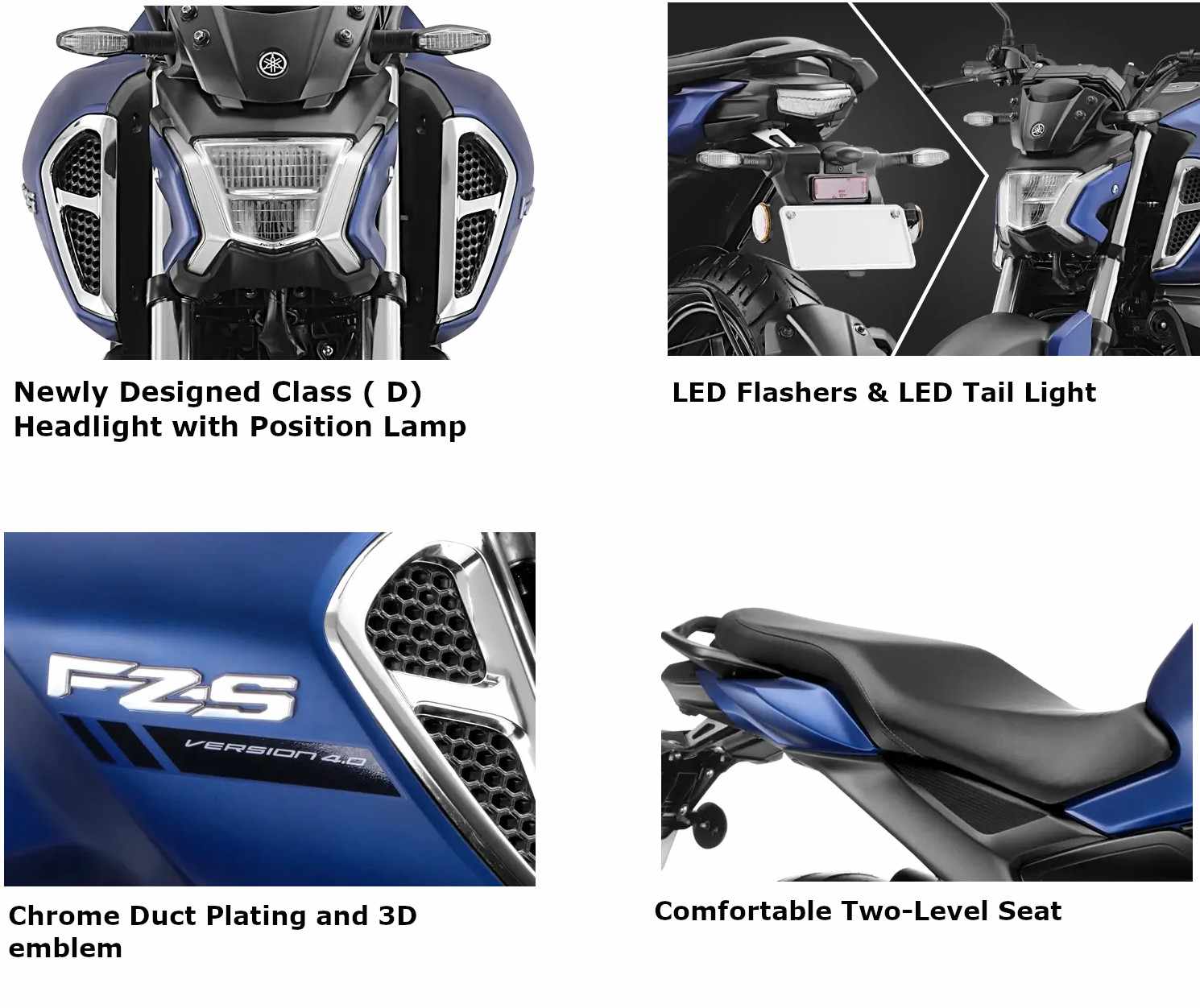Bikes4Sale Price Guide : Used Bike Valuation Tool
Know the market value of your used bike
KMs Run
| Selected Bikes |  Bajaj Pulsar 150
Brand: Model: |
 Yamaha FZ-S FI Ver 4.0
Brand: Model: |
Brand: Model: |
Brand: Model: |
| Fuel | Petrol | Petrol | ||
| Engine Displacement | 149.50 cc | 149.00 cc | ||
| Engine | 4-Stroke, 2-Valve, Twin Spark BSVI Compliant DTS-i FI Engine | Air cooled, 4-stroke, SOHC, 2-valve | ||
| Engine Starting | Electric and Kick | Electric Starter | ||
| Fuel System | -- | Fuel injection | ||
| Maximum Power | 14 PS @ 8500 RPM | 12.4PS @ 7250 rpm | ||
| Maximum Torque | 13.25 NM @ 6500 RPM | 13.3 Nm @ 5500 rpm | ||
| Transmission | -- | Constant mesh, 5-speed | ||
| Battery | 12V Full DC | 12V | ||
| Display | -- | Multi-function LCD Instrument Cluster | ||
| Seats | -- | Comfortable Two-Level Seat | ||
| Headlamp | 35/35 W with 2 pilot lamps, With AHO (Auto Headlamp On) | Class ( D) Headlight with Position Lamp | ||
| Taillamp | LED | LED Tail Light |
| Front | 80/100 17 Tubeless | 100/80-17M/C 52P-Tubeless | ||
| Rear | 100 / 90 17 Tubeless | 140/60-R17 | ||
| Wheel / RIM | Alloy | -- |
| Front | ABS, 260 mm Disc | 282mm Disc Brake | ||
| Rear | 130mm Dia. Drum | 220mm Disc Brake | ||
| ABS | -- | Single Channel ABS |
| Front | Telescopic, 31mm Conventional fork | Telescopic fork | ||
| Rear | Twin Shock absorber, Gas filled with Canister | 7-Step Adjustable Monocross Suspension |
| Colors | Black/Grey Black /Red |
Dark Matte Blue Matte Black |
| Length | 2055 mm | 2000 mm | ||
| Width | 765 mm | 780 mm | ||
| Height | -- | 1080 mm | ||
| Weight | 148 kg | -- | ||
| Kerb Weight | -- | 136 | ||
| Seat Height | -- | 790 | ||
| Wheelbase | 1320 mm | 1330 mm | ||
| Ground Clearance | 165 mm | 165 mm | ||
| Fuel Tank Capacity | 15 litres | 13 litres |
| About | The Bajaj Pulsar 150 is a popular motorcycle that has been on the market for many years. With i Read More | The Yamaha FZ-S FI Ver 4.0 is a nimble motorcycle powered by a 149cc air-cooled engine with fue Read More | ||
| Features | -- | - Traction Control System - Y-Connect - Side Stand engine cut-off switch  |
| Pros | - Robust and reliable 149.50 cc, BSVI-compliant DTS-i FI engine. - Sporty and stylish aesthetics. - Respectable fuel economy with a 15-litre tank capacity. - Excellent suspension system for a comfortable ride on varied terrains. - ABS 260mm disc front brake for reliable and safe stopping power. - Reasonably priced for the features it offers. |
-- | ||
| Cons | - Rear drum brake instead of disc could be a potential downside for some riders. - Lack of a digital instrument cluster which is becoming standard in this segment. - Despite the robust engine, top-end performance could be better. - Limited colour options. - Absence of a sixth gear may affect long highway rides. |
-- |
Get the best price for your old bike. Sell your bike at the Largest Used Bike Market.